Fundamental roles of chromatin loop extrusion in antibody class switching
- PMID: 31666703
- PMCID: PMC6856444
- DOI: 10.1038/s41586-019-1723-0
Fundamental roles of chromatin loop extrusion in antibody class switching
Abstract
Antibody class switch recombination (CSR) in B lymphocytes replaces immunoglobulin heavy chain locus (Igh) Cμ constant region exons (CHs) with one of six CHs lying 100-200 kb downstream1. Each CH is flanked upstream by an I promoter and long repetitive switch (S) region1. Cytokines and activators induce activation-induced cytidine deaminase (AID)2 and I-promoter transcription, with 3' IgH regulatory region (3' IgHRR) enhancers controlling the latter via I-promoter competition for long-range 3' IgHRR interactions3-8. Transcription through donor Sμ and an activated downstream acceptor S-region targets AID-generated deamination lesions at, potentially, any of hundreds of individual S-region deamination motifs9-11. General DNA repair pathways convert these lesions to double-stranded breaks (DSBs) and join an Sμ-upstream DSB-end to an acceptor S-region-downstream DSB-end for deletional CSR12. AID-initiated DSBs at targets spread across activated S regions routinely participate in such deletional CSR joining11. Here we report that chromatin loop extrusion underlies the mechanism11 by which IgH organization in cis promotes deletional CSR. In naive B cells, loop extrusion dynamically juxtaposes 3' IgHRR enhancers with the 200-kb upstream Sμ to generate a CSR centre (CSRC). In CSR-activated primary B cells, I-promoter transcription activates cohesin loading, leading to generation of dynamic subdomains that directionally align a downstream S region with Sμ for deletional CSR. During constitutive Sα CSR in CH12F3 B lymphoma cells, inversional CSR can be activated by insertion of a CTCF-binding element (CBE)-based impediment in the extrusion path. CBE insertion also inactivates upstream S-region CSR and converts adjacent downstream sequences into an ectopic S region by inhibiting and promoting their dynamic alignment with Sμ in the CSRC, respectively. Our findings suggest that, in a CSRC, dynamically impeded cohesin-mediated loop extrusion juxtaposes proper ends of AID-initiated donor and acceptor S-region DSBs for deletional CSR. Such a mechanism might also contribute to pathogenic DSB joining genome-wide.
Figures


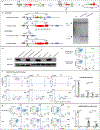
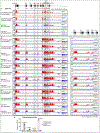

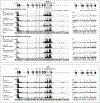



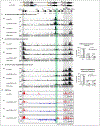
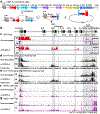
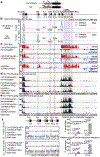


Comment in
-
One ring to rule them all.Nature. 2019 Nov;575(7782):291-293. doi: 10.1038/d41586-019-03200-4. Nature. 2019. PMID: 31719691 No abstract available.
References
-
- Muramatsu M et al. Class switch recombination and hypermutation require activation-induced cytidine deaminase (AID), a potential RNA editing enzyme. Cell 102, 553–563 (2000). - PubMed
-
- Cogne M et al. A class switch control region at the 3’ end of the immunoglobulin heavy chain locus. Cell 77, 737–747 (1994). - PubMed
Publication types
MeSH terms
Substances
Grants and funding
LinkOut - more resources
Full Text Sources
Molecular Biology Databases
Research Materials

